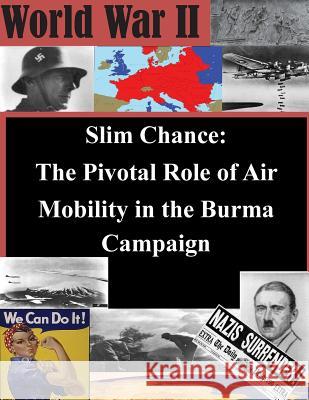Slim Chance: The Pivotal Role of Air Mobility in the Burma Campaign » książka
Slim Chance: The Pivotal Role of Air Mobility in the Burma Campaign
ISBN-13: 9781505392753 / Angielski / Miękka / 2014 / 102 str.
This book applies lessons learned from air mobility's pivotal role in Field Marshal Sir William Slim's World War II Burma campaign to contemporary air mobility operations. The author begins by tracing the evolution of air mobility from its pre-World War I roots to the Second World War, noting how its development proceeded despite the lack of coherent, codified doctrine. Next the author assesses Slim's Burma campaign and how the key elements of organization, training and leadership, apart from air mobility, proved critical to Allied victory. Building upon this, the discussion turns to air mobility's contributions to Slim's joint campaign. From this analysis, the author identifies the tenets of air superiority, organization and air mobility normalization as being critical and enduring airpower lessons from the Burma theater. The closing chapters offer a primer on contemporary mobility operations before arguing that modern air mobility practitioners must account for five key essentials: superiority across the air and space domains; proper organization that promotes relationship building at the operational level of war; normalization of the complete air mobility supply chain and its accompanying idea of air mobility mindedness; training focused on increased interoperability; and the vital role of leadership.
Zawartość książki może nie spełniać oczekiwań – reklamacje nie obejmują treści, która mogła nie być redakcyjnie ani merytorycznie opracowana.











